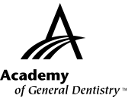|
Exercise No. 337
Subject Code: 490
Periodontics
The 15 questions for this exercise are based on the article, “Influence of periodontal biotype on the presence of interdental papilla”, on pages 20-24. This exercise was developed by Gustav Gates, DDS, MAGD, in association with the General Dentistry Self-Instruction Committee.
|
Reading the article and successfully completing this exercise will enable you to understand:
- how the absence of the interdental papillae can be a negative influence on dental esthetics;
- how periodontal biotype can influence the presence or absence of the interdental papilla; and
- how periodontal biotype, presence of interdental papilla, loss of papillary height, and the distance between the contact point and bone crest were evaluated.
|

